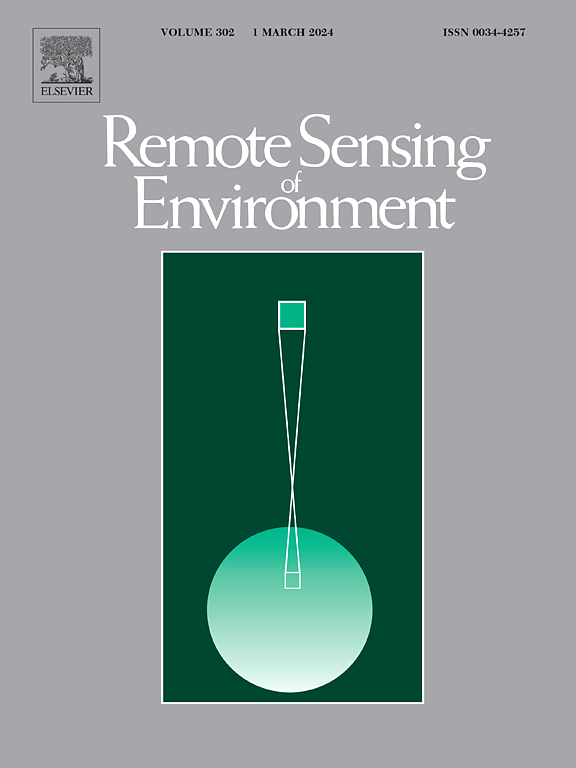Dynamic landslide susceptibility mapping over last three decades to uncover variations in landslide causation in subtropical urban mountainous areas
IF 11.1
1区 地球科学
Q1 ENVIRONMENTAL SCIENCES
引用次数: 0
Abstract
Landslide susceptibility assessment (LSA) plays a vital role in disaster prevention and mitigation. Recently, numerous data-driven LSA approaches have emerged. Nonetheless, most of them neglected the rapid oscillations within the landslide-prone environment, primarily due to significant changes in external triggers such as rainfall, which would render landslides susceptible to varying causations over time. Thus, conducting dynamic landslide susceptibility mapping (D-LSM) and revealing the underlying trends in landslide causes, become increasingly important for effective landslide hazard assessment. This study decomposed the entire D-LSM task into yearly LSA subtasks, and innovatively meta-learned intermediate representations that can be well-generalized and fine-tuned in a fast-adaptation manner. Then, to interpret the model predictions and characterize the variations in landslide causation, Shapley Additive exPlanations (SHAP) was utilized for feature permutation year by year. In addition, MT-InSAR techniques were applied to enhance and validate the D-LSM results. The study area was Lantau Island, Hong Kong, where the yearly LSA was executed from 1992 to 2019. The performance comparison results show that the proposed method outperformed the other approaches with regard to accuracy (3 %–7 %), precision (2 %–9 %), recall (3 %–5 %), and F1-score (2 %–7 %), even when adopting a fast adaptation strategy using only 5 samples and 5 gradient descent updates. This validates the applicability of meta-learning for identifying commonalities across multi-temporal LSA tasks. The overall model interpretation results indicate that slope and extreme rainfall were the primary contributors to landslide occurrences in Hong Kong. The feature permutation results over the 30 years reveal a variation in landslide causation, particularly a dramatic shift in the ranking of some contributing factors under extreme weather conditions. Remarkably, the importance of AERD (Annual Extreme Rainfall Days), a factor indicating extreme rainfall intensity, was deeply affected by global climate change and the government's Landslide Prevention and Mitigation Programme (LPMitP).
近三十年来亚热带城市山区滑坡敏感性动态制图揭示滑坡成因变化
滑坡易感性评价在防灾减灾中具有重要作用。最近,出现了许多数据驱动的LSA方法。然而,他们中的大多数都忽略了滑坡易发环境内的快速振荡,这主要是由于降雨等外部触发因素的显著变化,这将使滑坡容易受到不同原因的影响。因此,开展动态滑坡敏感性制图(D-LSM),揭示滑坡成因的潜在趋势,对于有效地进行滑坡危险性评估变得越来越重要。本研究将整个D-LSM任务分解为每年一次的LSA子任务,并创新地采用元学习的中间表征,这种中间表征能够以快速适应的方式进行良好的泛化和微调。然后,利用夏普利加性解释(Shapley Additive explanation, SHAP)逐年进行特征置换,对模型预测结果进行解释,表征滑坡成因变化。此外,应用MT-InSAR技术来增强和验证D-LSM结果。研究区域是香港大屿山,从1992年到2019年,每年都在那里执行LSA。性能比较结果表明,即使采用仅使用5个样本和5次梯度下降更新的快速自适应策略,该方法在准确率(3% - 7%)、精密度(2% - 9%)、召回率(3% - 5%)和f1分数(2% - 7%)方面都优于其他方法。这验证了元学习在识别跨多时间LSA任务的共性方面的适用性。整体模式解释结果显示,斜坡和极端降雨是香港滑坡发生的主要原因。30年来的特征排列结果揭示了滑坡成因的变化,特别是在极端天气条件下某些因素的排名发生了巨大变化。值得注意的是,全球气候变化和政府的滑坡防治计划(LPMitP)深刻影响了显示极端降雨强度的因子AERD(年极端降雨日)的重要性。
本文章由计算机程序翻译,如有差异,请以英文原文为准。
求助全文
约1分钟内获得全文
求助全文
来源期刊

Remote Sensing of Environment
环境科学-成像科学与照相技术
CiteScore
25.10
自引率
8.90%
发文量
455
审稿时长
53 days
期刊介绍:
Remote Sensing of Environment (RSE) serves the Earth observation community by disseminating results on the theory, science, applications, and technology that contribute to advancing the field of remote sensing. With a thoroughly interdisciplinary approach, RSE encompasses terrestrial, oceanic, and atmospheric sensing.
The journal emphasizes biophysical and quantitative approaches to remote sensing at local to global scales, covering a diverse range of applications and techniques.
RSE serves as a vital platform for the exchange of knowledge and advancements in the dynamic field of remote sensing.
 求助内容:
求助内容: 应助结果提醒方式:
应助结果提醒方式:


